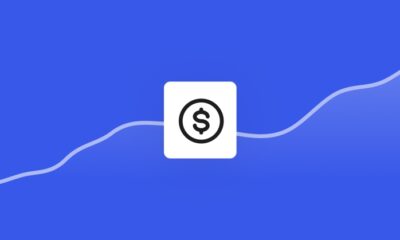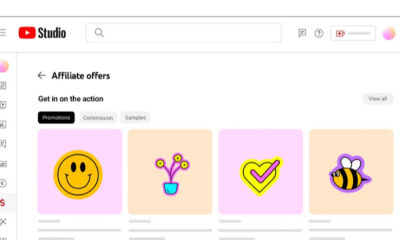AFFILIATE MARKETING
3 Best Affiliate Marketing Tips for New Bloggers

Affiliate marketing has been proven to be one of the most passive forms of making money online for the past decade. With affiliate marketing, affiliates can promote different products and services and get a commission without having to deal with any physical products or customers. Although the business model is great, many affiliates have had difficulty getting purchase-intent traffic to their affiliate offerings.
Blogging has emerged as a great medium for affiliate marketers to drive purchase-intent traffic to their website and affiliate offerings. With blogs, you can perform keyword research on purchase-intent keywords and write reviews on products and services. This will enable you to generate meaningful traffic to your affiliate offers and make sales. Although there are many blogging tips for affiliate marketers, all are not equally effective. Here are the best three tips to ensure bloggers can maximize their affiliate marketing efforts:
1. Increase domain rating:
Domain rating, also known as domain authority, refers to the authority of your blog. Domain rating is measured on a scale from 0 to 100 and it indicates the quality and number of sites that link back to your site. This is important because backlinks are a ranking factor that Google uses to rank sites. The higher your domain rating, the easier it is to rank for affiliate keywords.
As a new blogger, you can improve your domain rating by doing guest posts and getting backlinks to your site. This is the most efficient way to increase your domain rating because it helps you get initial backlinks to your site and this can attract more natural backlinks. I started building backlinks for my blog 3 months ago and was able to go from 0 to DR 30 with just guest posting. This helped me start ranking for some keywords and increased the traffic of my site dramatically. To succeed with guest posting you’ll need to do email outreach to sites with higher DR ratings and write posts for them with backlinks to your site. I’ve personally used Seamless.ai to help with my email outreach campaigns.
Many affiliate bloggers have the intention of selling their site in the future. Having a clean backlink profile and high domain authority will increase the valuation of their site and they can net a larger profit once the site is sold. If you want to sell a content site, one of the factors that buyers look at when pricing your site is domain authority. The bigger it is, the more valuable the site is because it can rank easier than lower authority sites.
2. Target lower difficulty terms:
A crucial mistake that bloggers make when doing affiliate marketing is target highly competitive keywords early on. If a keyword is lucrative, especially an affiliate keyword, there’s likely many others who are writing blog posts about that keyword. It’s best to target these keywords when the difficulty is low and your blog post can age and increase rankings over time. By focusing on low difficulty keywords, you can start getting some initial traffic and target more competitive keywords later on. If you start with competitive keywords immediately, you may never rank well and this can be demoralizing.
To target lower difficulty keywords, you need to do keyword research on tools like Ahrefs. Although tools like Ahrefs are not reflective of real-time data on Google, they are the best indicators of a keyword’s search volume and difficulty. You can use the keyword explorer in Ahrefs to get an indication of the traffic and difficulty of a keyword. Ideally, you should aim for higher volume and lower difficulty affiliate keywords and this will give you the best chance of driving traffic to your site and making an affiliate sale.
3. Prioritize recurring affiliate programs:
With enough domain authority and keyword research, you can rank competitively for many affiliate keywords. Although having passive affiliate sales is great, having recurring monthly affiliate revenue is better. The main affiliate marketing model that bloggers are accustomed to is promoting an affiliate product/service and getting a commission after a sale. That model is great because it can be passive and the recurring traffic you get by ranking well will ensure you get more sales each following month.
Recurring affiliate sales take this model to the next level. With recurring affiliate sales, you are paid indefinitely for each new customer you refer. Instead of getting a one-time commission for each sale, you will get a commission each month a customer pays for a product indefinitely. This takes passive income to the next level because your income won’t be tied to the traffic of your site as much. If you get 10 new customers to sign up for a recurring affiliate program in a month, you will still be paid every month onward until they stop paying for the service.
An example of this is the ConvertKit affiliate program. ConvertKit is an email marketing tool that creators use and it can be a great affiliate program to promote. As a ConvertKit affiliate, you get a 30% recurring commission for each month that someone you referred pays for the service. Targeting affiliate programs like these instead of one-time commissions can skyrocket your affiliate revenue for your blog. You can look up affiliate programs in your niche by searching for recurring affiliate programs + your niche on Google. I’ve done a similar post on seamless.ai and it’s already ranking well. Targeting these kinds of affiliates will enable you to get recurring revenue for months if not years for your blog.
These are just a few of the ways bloggers can improve their traffic and revenue for their affiliate marketing efforts. As you improve your site authority, keyword research and join new affiliate programs, you’ll continue to increase your chances of making affiliate sales and this can compound significantly over time.



















You must be logged in to post a comment Login